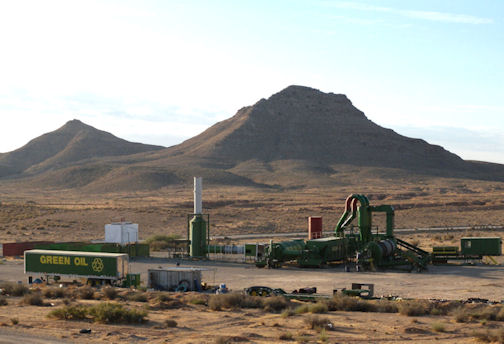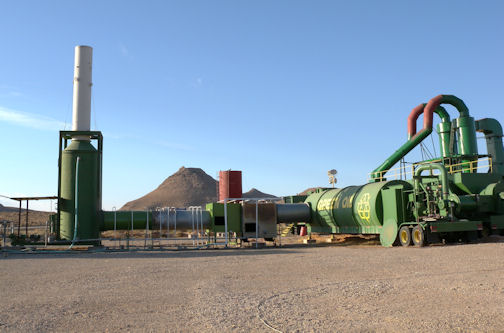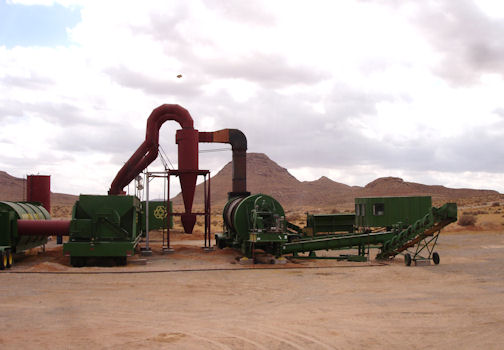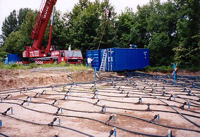Green Oil Libya's High Temperature Thermal Desorption and Oxidation System
Green Oil Libya's Mobile High Temperature Hazardous Waste Desorption and Oxidation System is designed to recover, remediate or destruct:
- Soil contaminated with distillate oils, poly-nuclear aromatic hydrocarbons, crude oil residues, chemicals, PCBs and/or POPs,
- Gases of any type, as well as
- Liquid solvents and other organic chemicals,
by rapidly volatilizing (desorbing) these substances, then thermally destroying them in the high temperature oxidizer, and cleaning the off gases in the quench and air pollution control system. Water in the waste is recovered in the closed quench/cooling/scrubber water system.
The major mechanical components of Green Oil Libya's system consist of:
- a Rotary Drum Desorber primary treatment unit,
- a Twin Cyclone dust removal system,
- a Bag House dust remover with 520 pneumatically operated specially designed filter bags,
- a High Temperature Thermal Oxidizer, and
- an off gas Quench and Catalytic Wet Scrub air pollution control system.
Main components of Green Oil Libya's Incinerator System are shown in the following photos:

Green Oil Libya's Incinerator in Assbea; From left to right: Cooling Water Tanks, Cooling Tower (white), Scrubber with Smoke Stack on top, Quenching System, Oxidizer, Bag House, Dual Cyclone, Rotary Kiln, Soil Feeding and Discharge System, Control Room. In foreground, Spare Parts Storage and Workshop (Click photo to enlarge)

Scrubber, Smokestack, Quench and Oxidizer (Click photo to enlarge)

Oxidizer, Bag House, Dual Cyclone, Rotary Kiln, Solids Handling System and Control Room (Click to enlarge)

Green Oil Libya's Assbea Instillation Overview (Click to enlarge)
|
Bio-Microbial and Biological Treatment:
Green Oil Libya also offers Bio-Microbial or Biological treatment, which is used for contaminated soil under certain conditions. Typical usage is for gas stations, pipelines or tank storage facilities where light hydrocarbons have leaked deep into the ground, and contaminated the soil as well as the ground water.
Bacteria taken in soil samples from the site to be treated are isolated, tested, adapted and fermented in the laboratory, and then produced in large quantities on site for injection into the ground. To adapt bacteria to digest given hydrocarbons may take 2000 to 6000 generations.

Cultivation of Bacteria |

In Situ Bio-Microbial Treatment |
|

